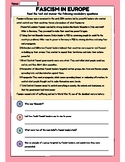109 results
10th grade astronomy scaffolded note pdfs
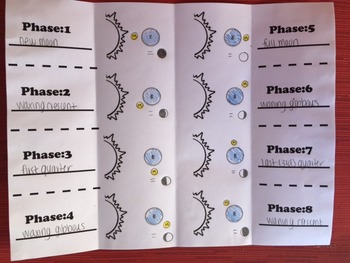
Phases of the Moon Foldable Worksheet for Interactive Notebook
This easy to print foldable allows students to practice naming and shading in phases of the moon in order. On the inside of the foldable, students practice determining how the position of the moon in its orbit around the earth relative to the sun determines the phase of the moon we see on earth. It is a great anchor of support for all learners. Page 1 is the outside of the foldable and page 2 is the inside of the foldable, making it easy to make a two sided foldable that can be glued into the i
Subjects:
Grades:
5th - 11th
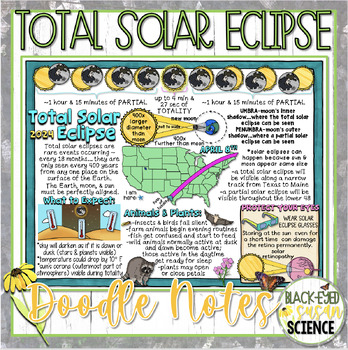
Total Solar Eclipse 2024 Doodle Notes & Quizzes (PDF and Google Form)
These fun yet educational notes will be a hit with your students! The perfect way to celebrate and learn about the total solar eclipse!Notes are differentiated. 3 versions are included. Choose from fill-in-the-blank or blank versions.Some things covered in these notes:*alignment of Earth, moon, and sun*umbra*penumbra*total*partial*April 8, 2024 path of totality*duration*what to expect*animal behavior*eye safety*examples*illustrationsWhen working through a Doodle Notes page, students complete a
Subjects:
Grades:
5th - 12th
Types:
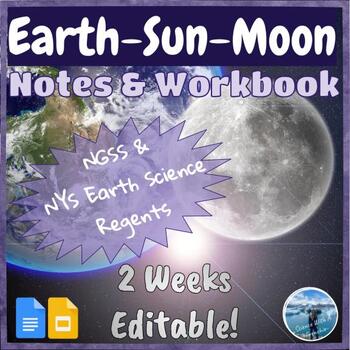
The Earth-Sun-Moon System Notes & Workbook | Astronomy Unit | Editable | NYS
This astronomy 2-week-long unit covers everything your students need to know about the Earth-Sun-Moon System for the New York State (NYS) Earth Science Regents exam. The students will learn about celestial observation, the seasons, duration & angle of insolation, the Sun’s paths in the sky, evidence for rotation & revolution, phases of the Moon, tides, and solar & lunar eclipses. They will also learn to read and use the "Solar System Data" chart on page 15 of the Earth Science Refere
Subjects:
Grades:
8th - 10th
Types:
CCSS:
NGSS:
MS-ESS1-1
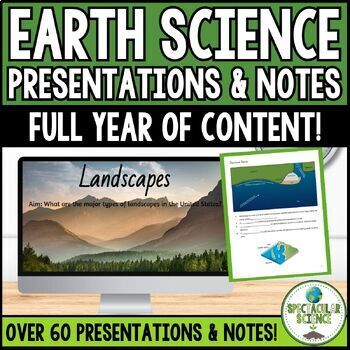
Earth Science Full Year Presentations & Notes Bundle
Elevate your Earth Science curriculum with the Earth Science Full Year Presentations and Notes Bundle, a comprehensive resource featuring meticulously designed presentations paired with corresponding guided notes from the Earth Science Full Year Curriculum. This comprehensive bundle equips educators with essential teaching materials designed to enhance student comprehension and engagement throughout the academic year.Incorporating visual aids and structured note-taking, this resource facilitates
Subjects:
Grades:
7th - 10th

Solar System Formation Doodle Notes
Use the provided slide and from NASA to engage students in a discussion and new understanding of how our solar system formed. The notes follow the timeline. Both an open box and a fill-in-the-blank version are provided.
Subjects:
Grades:
6th - 12th
NGSS:
MS-ESS1-4
, HS-ESS1-6
, MS-ESS3-1
, MS-ESS1-2
, MS-ESS1-3
...

Lunar Cycle Notes and Google Slides Presentation
A great resource for your science interactive notebook. Introduce the lunar cycle. This is a simple diagram with all of the information students need to identify and predict the moon phases. Add these notes to your interactive notebook today!What's included?Student note page (2-versions pictured on the preview page)Editable Google Slides presentationLove this resource? Follow my store to stay up to date with all my products!Let's Connect!InstagramFacebookPinterestCheck out more Earth and Space R
Subjects:
Grades:
5th - 12th
Also included in: Earth and Space Bundle
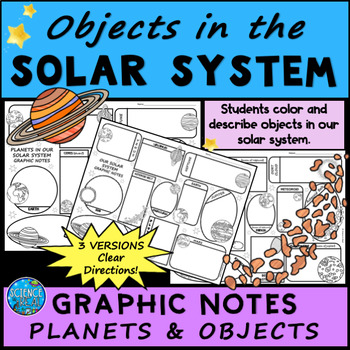
Planets Graphic Organizer - Solar System Graphic Organizer - 3 Versions
⭐ ⭐ Solar System Graphic Organizer - Graphic Notes with Student Directions!☀️Students will color and fill in information about objects in our solar system. This includes 3 Versions of Graphic Organizers and Clear Student Directions.Give students any of the three versions to color and describe the objects. Students use Internet research to find facts. The step-by-step clear directions sheet gives students the directions and expectations of the assignment.⭐ Version 1: Our Solar System: Includes Su
Subjects:
Grades:
6th - 12th

Life Cycle of a Star Notes
This activity is aligned with science TEKS 8.8A. This is a great way to organize notes over the life cycle of a star.Love this resource? Follow my store to stay up to date with all my products!Let's Connect!InstagramFacebookPinterestCheck out more Earth and Space Resources
Subjects:
Grades:
4th - 12th
Also included in: Earth and Space Bundle

The Moon Presentation & Guided Notes
Delve into the mysteries of the lunar cycle with The Moon Presentation and Guided Notes, offering an immersive exploration of the moon and the moon phases. This high-quality resource is designed to address the essential question, "Does the moon actually change shape?" – a fundamental inquiry that sparks curiosity and critical thinking among students.This presentation encapsulates a wealth of content designed to enrich students' understanding of our lunar neighbor. Beginning with foundational bac
Subjects:
Grades:
7th - 10th
Also included in: Earth Science Full Year Presentations & Notes Bundle

One Strange Rock (Gasp, Episode 1) Video Guiding Questions
These questions follow along with the video (found on National Geographic's website or https://www.dailymotion.com/video/x6h32wb). It is a fill-in-the blank worksheet with 20 questions, emphasizing Earth-Space science concepts. An entire curriculum for more activities regarding the One Strange Rock series can be found at: https://media.nationalgeographic.org/assets/file/One_Strange_Rock.pdfThe NGSS covered in the video include:LS4.D: Biodiversity and Humans· Biodiversity is increased by the form
Subjects:
Grades:
6th - 12th

Big Bang Presentation & Guided Notes
Embark on a cosmic journey with this The Big Bang Presentation and Guided Notes, centered around the essential question, "How did the universe form?" This high-quality educational tool takes students on an exploration of cosmology and unravels the mysteries behind The Big Bang Theory, providing insights into the age of our universe and cosmic phenomena.Highlighting key concepts such as cosmic background radiation, the electromagnetic spectrum, the Doppler effect, red shift, and blue shift, the 2
Subjects:
Grades:
8th - 11th
NGSS:
HS-ESS1-6
Also included in: Earth Science Full Year Presentations & Notes Bundle
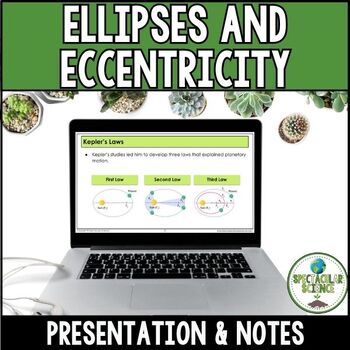
Ellipses and Eccentricity Presentation & Guided Notes
Embark on a celestial exploration with this Ellipses and Eccentricity Presentation and Guided Notes resource, centered around the essential question, "How do we describe the shape of our revolutionary orbit?" This high-quality educational tool introduces students to the fascinating world of Johannes Kepler, gravity, and the laws that govern planetary motion.Dive into the intricacies of ellipses, perihelion, aphelion, orbit, and the eccentricity formula, all accompanied by stimulating visuals to
Subjects:
Grades:
8th - 11th
NGSS:
HS-ESS1-4
, MS-PS2-4
, MS-ESS1-2
Also included in: Earth Science Full Year Presentations & Notes Bundle
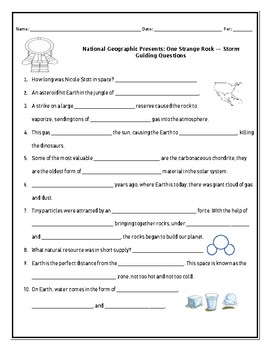
One Strange Rock (Storm, Episode 2) Video Guiding Questions
These questions follow along with the video (found on National Geographic's website or https://www.dailymotion.com/video/x6lup6z). It is a fill-in-the blank worksheet with 20 questions, emphasizing Earth-Space science concepts. An entire curriculm for more activities regarding the One Strange Rock series can be found at: https://media.nationalgeographic.org/assets/file/One_Strange_Rock.pdfThe NGSS covered in the video include: ESS1.B: Earth and the Solar System - The solar system consists of the
Subjects:
Grades:
6th - 12th
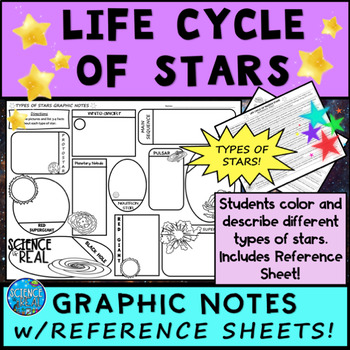
Life Cycle of Stars Graphic Notes with Reference Sheets
⭐ ⭐ ⭐ Life Cycle of Stars Graphic Organizer - Graphic Notes w/ Reference Sheets!Students will color and fill in information about each type of star. Two Reference Sheets are included (for average and massive stars) that describe that type of star and its role in the life cycle of stars.Students color and descibe each type of star in its life cycle for average and massive stars. The two reference sheets give information about each type of star and its role in stellar evolution to support the stud
Subjects:
Grades:
6th - 11th
NGSS:
MS-ESS1-2
, HS-ESS1-3
, HS-ESS1-1
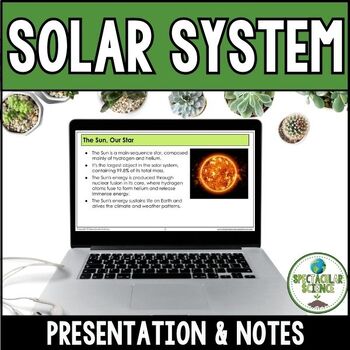
Solar System Presentation and Guided Notes
Dive into the vast expanse of our solar system with this comprehensive Solar System Presentation and Guided Notes. This high-quality resource is centered around the essential question "Why are we considered a solar system?" and delves into the intricacies of our celestial neighborhood. Students explore the sun, terrestrial planets, jovian planets, dwarf planets, The Kuiper Belt, The Oort Cloud, moons, asteroids, meteoroids, comets and their tails, as well as space exploration and discoveries. Th
Subjects:
Grades:
7th - 10th
Also included in: Earth Science Full Year Presentations & Notes Bundle
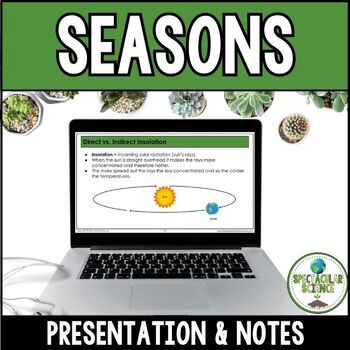
Reasons for Seasons Presentation & Guided Notes
Delve into the intriguing realm of celestial phenomena with this Reasons for Seasons Presentation and Guided Notes – a high-quality resource designed around the essential question: "How does the tilt of Earth’s axis and Earth’s movement lead to the changing seasons?" This comprehensive presentation is thoughtfully designed to offer educators a dynamic tool for unraveling the captivating science behind Earth's seasonal shifts.In this presentation, students will delve into the intricacies of Earth
Subjects:
Grades:
7th - 10th
Also included in: Earth Science Full Year Presentations & Notes Bundle
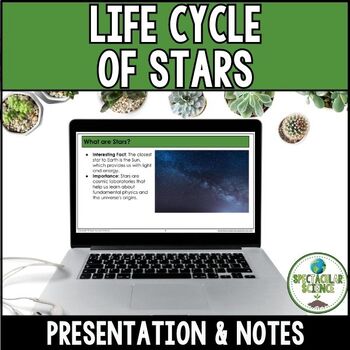
Life Cycle of Stars Presentation & Guided Notes
Embark on a cosmic exploration with this Life Cycle of Stars Presentation and Guided Notes – a high-quality resource centered around the essential question: "How do we classify stars in the universe?" In this presentation, each stage of a star's life cycle is vividly illuminated. Students delve into the intricacies of using the Hertzsprung-Russell (H-R) diagram to classify stars into main sequence, giants, supergiants, and white dwarfs. The content is presented in an engaging manner, making comp
Subjects:
Grades:
7th - 10th
Also included in: Earth Science Full Year Presentations & Notes Bundle
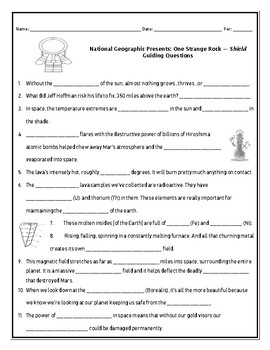
One Strange Rock (Shield, Episode 3) Video Guiding Questions
These questions follow along with the video (found on National Geographic's website or https://www.dailymotion.com/video/x6ln94k). It is a fill-in-the blank worksheet with 20 questions, emphasizing Earth-Space science concepts. An entire curriculum for more activities regarding the One Strange Rock series can be found at: https://media.nationalgeographic.org/assets/file/One_Strange_Rock.pdfThe NGSS covered in the video include:ESS1.B: Earth and the Solar System- The solar system consists of the
Subjects:
Grades:
6th - 12th

Classification of Stars Presentation & Guided Notes
Embark on a stellar exploration with this Classification of Stars Presentation and Guided Notes, focused on the essential question, "How do we classify the stars in our universe?" This high-quality educational tool invites students to unravel the celestial tapestry, exploring the classification of stars and the fascinating phenomena that define our cosmic neighborhood.Highlighting essential concepts such as nebula, galaxy, Milky Way Galaxy, nuclear fusion, temperature, luminosity, and the Hertzs
Subjects:
Grades:
8th - 11th
Also included in: Earth Science Full Year Presentations & Notes Bundle
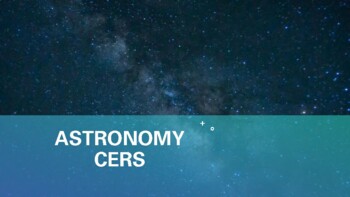
Astronomy Claim, Evidence, and Reasonings (CER)
This product contains 46 CERs. The first CER focuses on lab safety and is used as an introductory piece. The other 45 CERs focuses on nearly all of the taught concepts over the course of a year. My students had to complete a CER for every topic and it helped them organize their thoughts. CERs can be used with videos, articles, research, and many other resources. I did include a rubric that I designed. The evidence portion is worth 30 points because the proof leads to the claim. The reasoning is
Subjects:
Grades:
8th - 12th
Also included in: Astronomy (ENTIRE YEAR COURSE BUNDLE)

Types of Telescopes
This worksheet is a great way to introduce your students to the different types of telescopes. Included are guided notes as well as an answer key. Students will go through the NASA website (How Do Telescopes Work? | NASA Space Place – NASA Science for Kids), read, and fill out the the notes along the way.This would be a great introduction to my parts of the telescope lesson.Similar Products:Constellation Memory GameConstellation Investigation Booklet ProjectParts of a Telescope Interactive Notes
Subjects:
Grades:
5th - 12th
NGSS:
MS-ESS1-3
, HS-ESS1-2
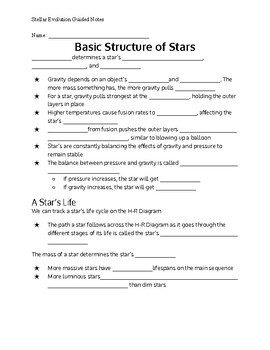
Stellar Evolution Guided Notes - the life cycle of a low mass star
Guided notesheet to go along with the stellar evolution slides. This worksheet specifically focuses on the life cycle of low-mass stars. It covers the different branches of the H-R Diagram and what happens to a star at each branch
Subjects:
Grades:
9th - 12th
Types:
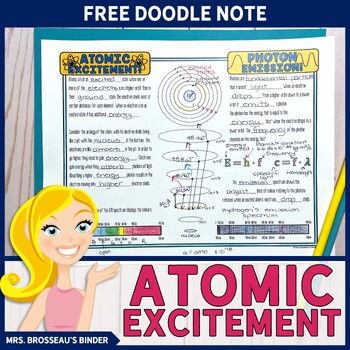
Atomic Excitement and Photon Emission Doodle Note | Spectroscopy
This FREE Doodle Note will help you teach your students about atomic excitement and photon emission. This idea connects spectroscopy to different disciplines of Science, in particular Physics, Chemistry, and Astronomy.This Doodle Note also introduces the idea of the Planck Constant which is a good introduction for the Photoelectric Effect, photon energy, and advanced atomic structure. Calculations are not necessary for this note. This note would be best used after the free EM Spectrum Doodle Not
Subjects:
Grades:
9th - 12th

Heliocentric vs. Geocentric Venn Diagram and Pocket Activity
This product allows students to compare and contrast models of the "solar system" as well as the founding scientist. The pockets focus on Ptolemy and Copernicus and the venn diagram establishes the correlation between both principles. The students will better understand contributions of scientists. The activities can fit on the same page and color paper makes it look better.ASTRO 4(B): Students will research and describe the contributions of scientists to our changing understanding of astronomy
Subjects:
Grades:
8th - 12th
Also included in: Contributions of Scientist
Showing 1-24 of 109 results


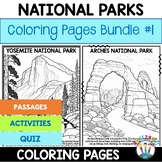

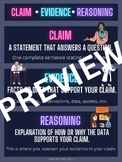
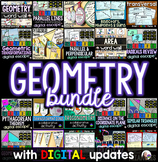
![Preview of Year 10 Biology (Australian Curriculum) [Workbook]](https://ecdn.teacherspayteachers.com/thumbitem/Year-10-Biology-Australian-Curriculum-Workbook--6442923-1646016135/large-6442923-1.jpg)
